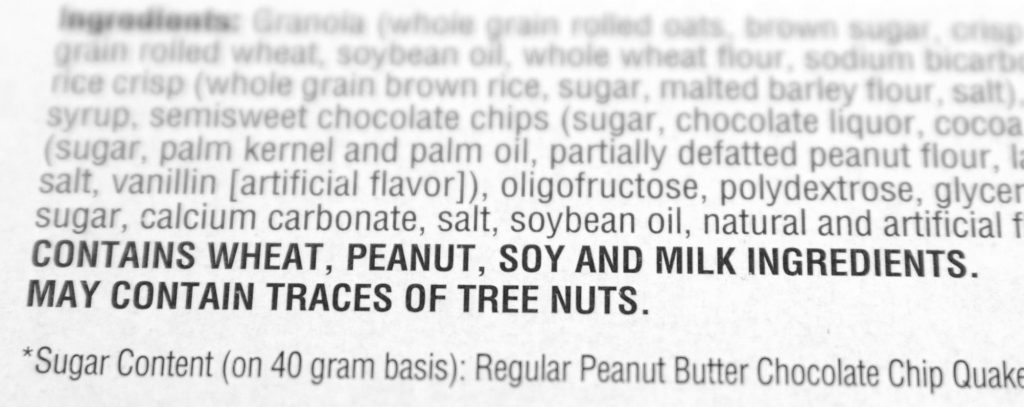Precautionary labelling & peanut, hazelnut & milk in foodstuffs in Canada


Two new publications emerging from AllerGen-funded research provide insight into the relationship between precautionary allergen labelling (PAL – usually employing “may contain…” statements) and the actual allergen content of various Canadian foodstuffs.
PAL is widely used in food industries. However, occurrence studies conducted outside of Canada have shown that few products contain the allergens listed in their precautionary labels.
To assess the accuracy of PAL in Canada, Prof. Samuel Godefroy (Université Laval) and his team planned and implemented food surveys documenting the occurrence of allergen markers in foods available for sale in Canada and attempted to correlate findings with the use of PAL on these products. These surveys targeted over 6,000 samples and focused on peanut, hazelnut, milk, egg and sesame.
Two publications of Prof. Godefroy’s team were recently made available in the scientific literature and reported on occurrence findings as well as risk assessments associated with some of the findings.
Peanuts & Hazelnuts: PAL in Canada
With regard to peanut and hazelnut, results showed that:
- out of 871 samples analyzed for peanut, 94% had a PAL for peanut but only 9% had sufficient peanut content to warrant such a warning;
- out of 863 samples analyzed for hazelnut, 72% had a PAL for hazelnut/treenut but only 4% had sufficient hazelnut content to warrant such a warning;
- out of 9 samples with peanuts listed as a minor ingredient, 3 (33%) did not contain peanuts;
- out of 234 products with a “peanut-free” claim, one did contain peanuts; and
- of the products tested, chocolates most often contained peanut and/or hazelnut.
Milk: PAL in Canada
With regard to products containing a PAL for milk, an analysis of the actual milk content of these products found that milk-allergic individuals would be at risk of an allergic reaction:
- 16% of the time when consuming dark chocolate with a PAL for milk;
- 3.8% of the time when consuming baked goods with a PAL for milk; and
- 0.6% of the time when consuming cookies with a PAL for milk.
Among the authors’ conclusions are that chocolates should be treated apart from other foods and used in risk assessment scenarios to improve manufacturing practices, reducing unnecessary PAL use; and that dark chocolate, cookies, and baked goods with PAL for milk should be avoided by milk-allergic Canadians to prevent allergic reactions.
“We are hopeful that the data generated as a result of research funded through the AllerGen program will help better document current practices of PAL use and contribute to a better understanding of the potential risks posed by consumption of these products by allergic consumers,” commented Dr. Godefroy in describing the outputs of this research.
“Ultimately, this work will inform current efforts to better manage allergens in processed foods.”
“This research should also support more accurate labelling, which is needed to help allergic Canadians minimize their exposure to allegens without unduly limiting their choices,” adds corresponding author Emilie Manny (Université Laval), a former AllerGen trainee.
The study on peanut and hazelnut was published in npj Science of Food. The study on milk was published in Food and Chemical Toxicology.
.
